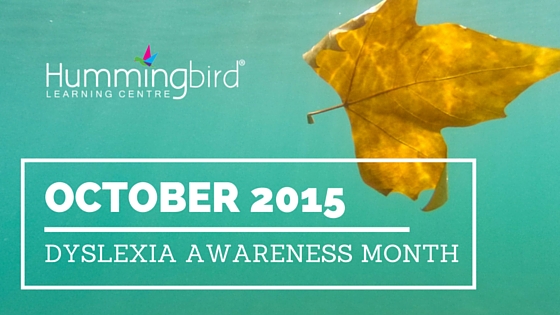A few weeks ago, my cousin Trish was visiting from Dublin. Trish is a Montessori teacher and as you can imagine, it didn’t take long for the conversation to turn to learning. We were amazed to find that we have both noticed that many children dislike writing and how there seems to be a decline in handwriting skills and an increase in really bad pencil grips!
Handwriting Requires:
-Fine motor skills: Dexterity, Precision, Coordination, Grasping
-Visual motor/Oculomotor skills: Eye teaming, Convergence, Scanning
-Behavioural skills: Attention, Focus, Creativity
Writing can be both a representation of necessary skill mastery (i.e. a proper grasp = able to button a shirt, tie shoes, or open containers to prepare a meal).
OR, it can be a window into underlying delays in skill development (i.e. poor handwriting can reveal visual motor integration issues, vision issues, behavioural/emotional issues, etc.).
Humans are not born with the natural inclination to hold writing tools with a proper grip. The proper pencil grasp actually has a name: the tripod grip. Though the tripod grip is preferred, the quadropod grip is also a common and accepted grip.
 The tripod grip utilizes three fingers to secure a writing utensil: the thumb and forefinger directing, with the utensil resting on the middle finger. The quadropod grip uses four fingers working together to stabilize the writing tool.
The tripod grip utilizes three fingers to secure a writing utensil: the thumb and forefinger directing, with the utensil resting on the middle finger. The quadropod grip uses four fingers working together to stabilize the writing tool.
The tripod grip is the ideal grip for proper letter and number formation and writing, and this grip is a skill that must be modelled, taught, and corrected. When there are too many fingers involved, or if the stance is improper, writing will not be as easy as it can be. And writing is a difficult skill even without the grip!
But how do you teach kids how to properly hold a writing utensil?
Before you even place the tool in the child’s hand, determine whether the child is right-handed or left-handed (or a ciotóg as we say in Irish).
When you are ready to introduce the tripod grip, it’s pretty simple:
– Place a writing tool in your child’s hand;
– Move the fingers to the proper position, encouraging the child to keep their little finger and ring finger on the palm so that the fingers can do their jobs (a little pom-pom is great to use here);
– Show the child how to manipulate the tool by moving their fingers more than their wrist.
 And after your child does a little bit of doodling, colouring, and painting, the tripod grip will become as easy as breathing. It’s just imperative for parents to play an integral role in instructing early on, with demonstrating, correcting, and modelling. I cannot stress this enough – children seem to be arriving to Montessori, playschool and big school with really poor tripod grips and if not corrected early it can become a problem later on.
And after your child does a little bit of doodling, colouring, and painting, the tripod grip will become as easy as breathing. It’s just imperative for parents to play an integral role in instructing early on, with demonstrating, correcting, and modelling. I cannot stress this enough – children seem to be arriving to Montessori, playschool and big school with really poor tripod grips and if not corrected early it can become a problem later on.
Ideally, we want children to be comfortable writing and to teach them proper grip as a starting point. As they get older this will mean that they are more relaxed when writing with a lot less neck, shoulder and wrist discomfort when writing essays or in exams. They won’t be digging into the paper because the grip will be secure and they will writing with better flow.
Cursive writing will also become easier and as cursive writing aids the flow of thoughts, having the correct handwriting grip is vital.
Trish went back to Dublin and on my recommendation started to use the pom-pom with her Montessori students – the results were astounding – here’s the text she sent me:
“OMG what a difference the humble pom-pom makes! The pencil holding and letter formation with the children who were struggling has improved by 100%! Thank you…thank you.”
Have you noticed how your child holds their pen & pencil? For more information contact me at elaine@hummingbirdlearning.com



 The trick is to find ways that allows the child to fidget, without disrupting the entire class or annoying the hell out of the teacher. When children come to us at Hummingbird Learning Centre, their parents stay for the session as well. Thinking that it must annoy me, parents will often interject when their child fidgets; telling the child to put things down or to sit still. The truth is; I’m never bothered by it, in fact I will often give a child something to fidget with. You see, it’s not the child fidgeting that is the issue. It is way the observer reacts to the fidgeting that is the real issue.
The trick is to find ways that allows the child to fidget, without disrupting the entire class or annoying the hell out of the teacher. When children come to us at Hummingbird Learning Centre, their parents stay for the session as well. Thinking that it must annoy me, parents will often interject when their child fidgets; telling the child to put things down or to sit still. The truth is; I’m never bothered by it, in fact I will often give a child something to fidget with. You see, it’s not the child fidgeting that is the issue. It is way the observer reacts to the fidgeting that is the real issue. Velcro: Placing some sticky backed Velcro onto a ruler or even under the desk will give the child something to touch. Use both the hook side & the soft side – the contrast will make it a better fidget.
Velcro: Placing some sticky backed Velcro onto a ruler or even under the desk will give the child something to touch. Use both the hook side & the soft side – the contrast will make it a better fidget.

























